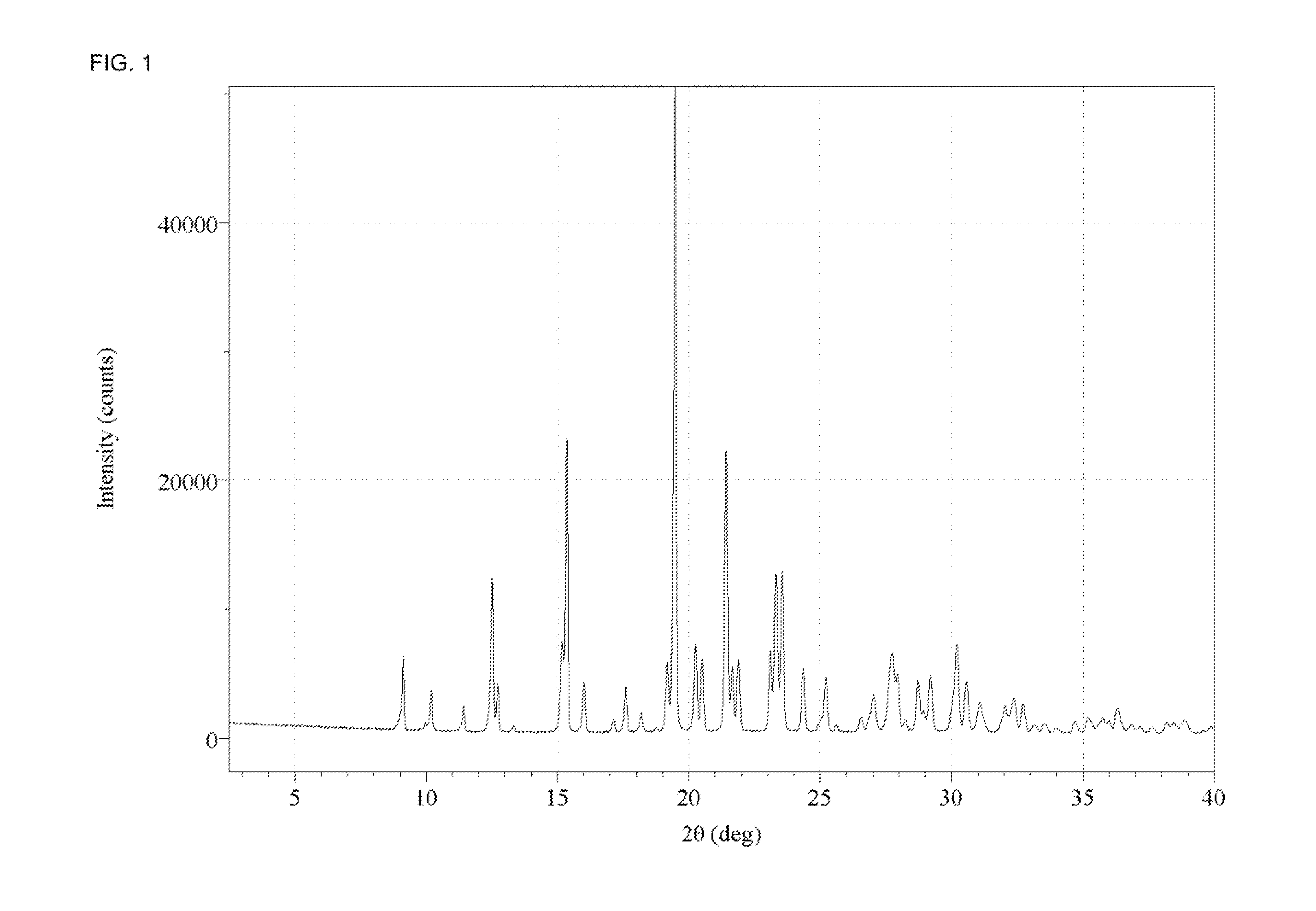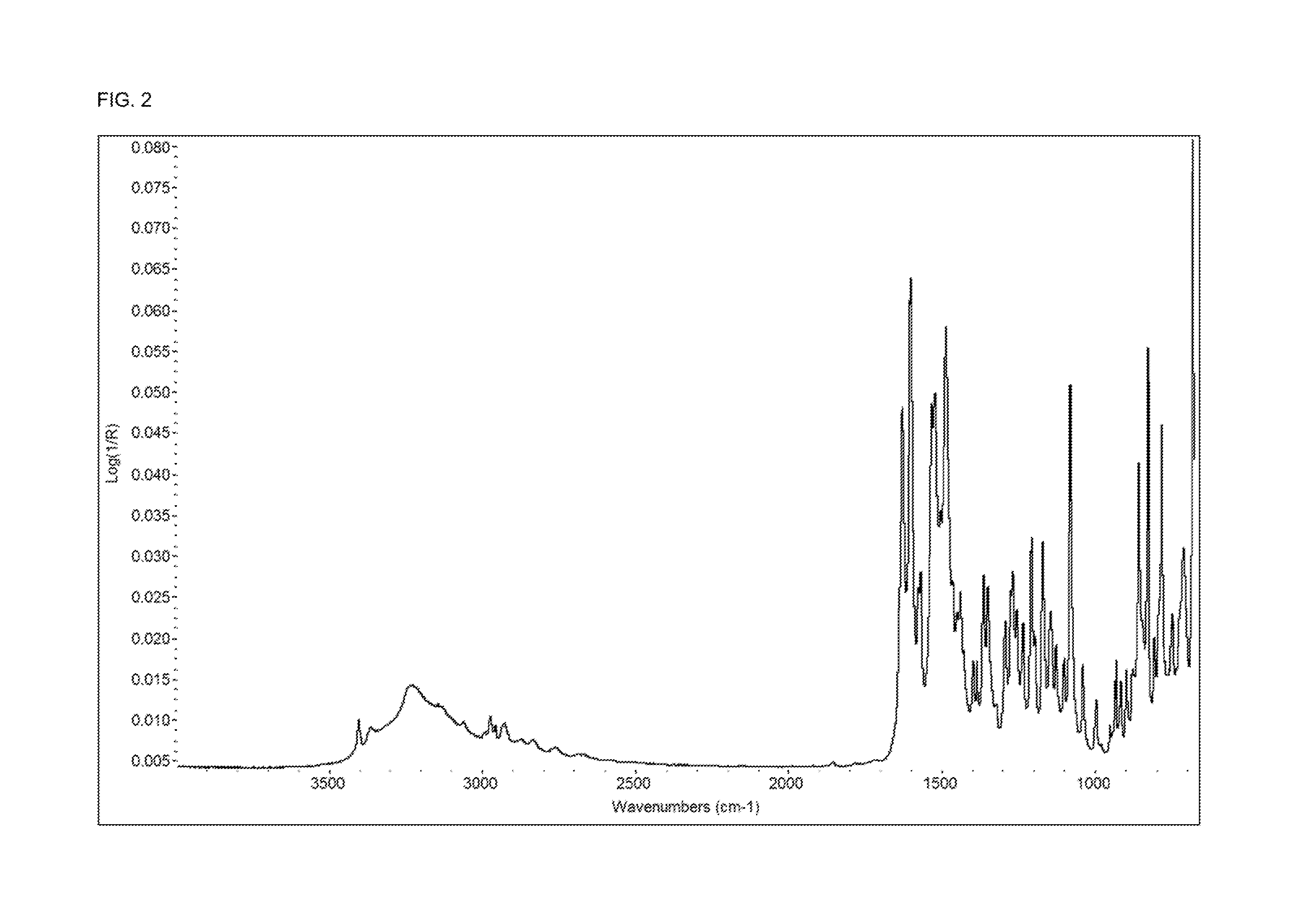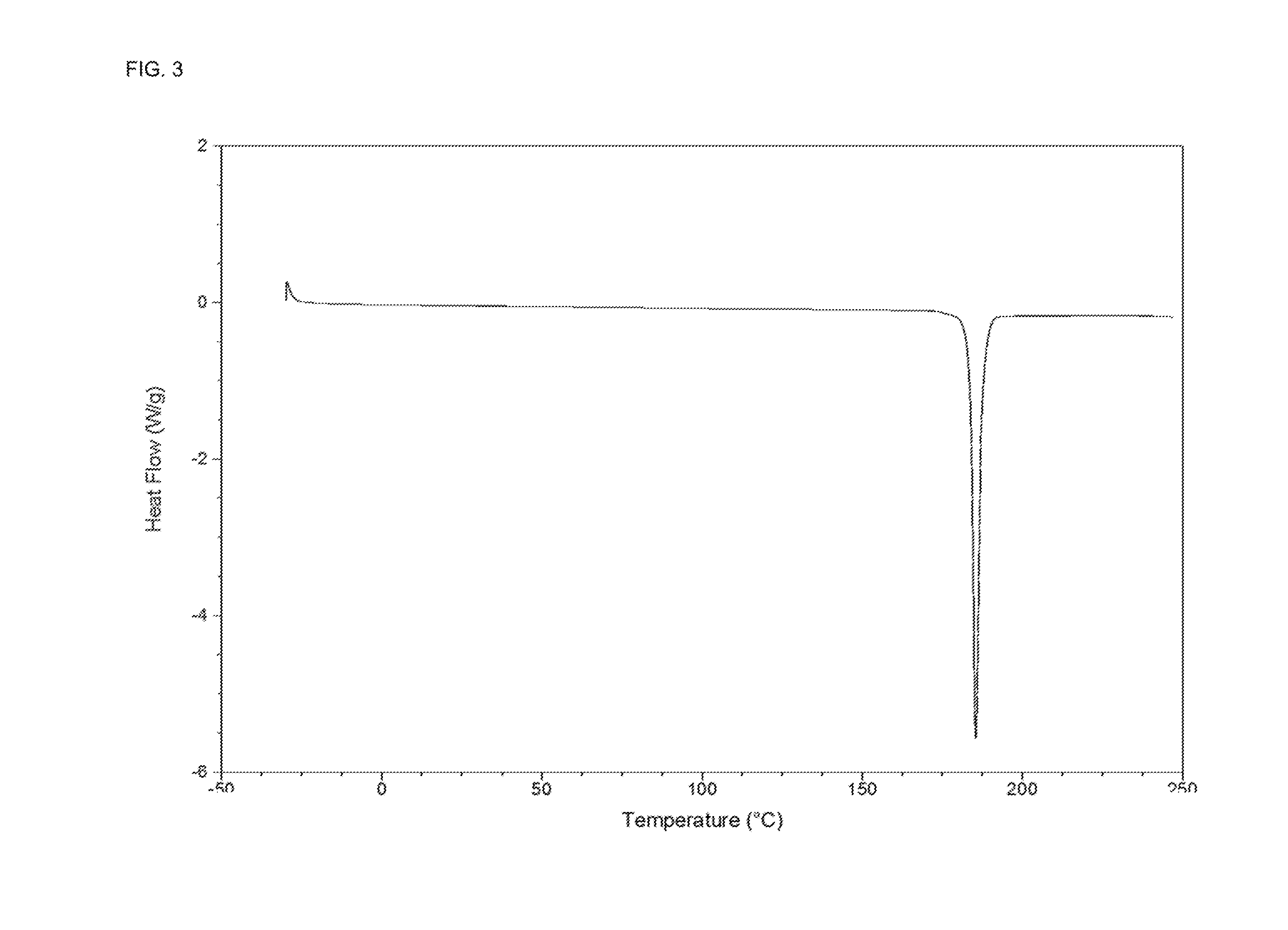CRYSTALLINE FORMS OF C21H22Cl2N4O2
a technology of c21h22cl2n4o2 and crystalline forms, which is applied in the field of crystalline forms of 4(5chloro2isopropylaminopyridin4yl)1hpyrrole2carboxylic acid, can solve the problem of limiting the ability to formulate a composition with an adequate shelf life, and achieve improved solubility characteristics, improved stability, and improved properties
- Summary
- Abstract
- Description
- Claims
- Application Information
AI Technical Summary
Benefits of technology
Problems solved by technology
Method used
Image
Examples
example 1
X-Ray Powder Diffraction (XRPD)
[0222]Transmission mode XRPD patterns were collected using an incident beam of Cu radiation produced using a fine-focus source. An elliptically graded multilayer mirror was used to focus Cu Kα X-ray radiation through the specimen and onto the detector. Prior to the analysis, a silicon specimen (NIST SRM 640d) was analyzed to verify that the observed position of the Si 111 peak was consistent with the NIST-certified position. A specimen of the sample was sandwiched between 3-μm-thick films and analyzed in transmission geometry. A beam-stop, short antiscatter extension, and antiscatter knife edge were used to minimize the background generated by air. Soller slits for the incident and diffracted beams were used to minimize broadening from axial divergence. Diffraction patterns were collected using a scanning position-sensitive detector located 240 mm from the specimen. Preferred orientation and particle static effects were not assessed...
example 2
Preparation of Crystalline Free Base 4-(5-Chloro-2-isopropylaminopyridin-4-yl)-1H-pyrrole-2-carboxylic acid [1-(3-chlorophenyl)-2-hydroxyethyl]amide
[0228]4-(5-Chloro-2-isopropylaminopyridin-4-yl)-1H-pyrrole-2-carboxylic acid [1-(3-chlorophenyl)-2-hydroxyethyl]amide free base was prepared according to the following synthesis scheme.
[0229]In Step 1, a clean and dry 200 L glass-lined reactor was evacuated to ≦−0.08 MPa, and then filled with nitrogen to normal pressure three times. Anhydrous ethanol (49.90 kg) was charged into the 200 L glass-lined reactor. ASYM-111606 (Asymchem) (12.70 kg) and isopropylamine (29.00 kg) were added into the mixture in turn. The mixture was heated to 65-75° C. for refluxing. The mixture reacted at 65-75° C. After 20 h, the reaction was sampled and analyzed by HPLC every 4-6 h until the content of ASYM-111606 was 1%. The mixture was cooled to 40-45° C. and was concentrated at ≦45° C. under reduced pressure (≦−0.08 MPa) until 13-26 L remained. The organic p...
example 3a
Preparation of 4-(5-Chloro-2-isopropylaminopyridin-4-yl)-1H-pyrrole-2-carboxylic acid [1-(3-chlorophenyl)-2-hydroxyethyl]amide Form C
[0237]
[0238]4-(5-Chloro-2-isopropylaminopyridin-4-yl)-1H-pyrrole-2-carboxylic acid [1-(3-chlorophenyl)-2-hydroxyethyl]amide Form C was prepared from 4-(5-Chloro-2-isopropylaminopyridin-4-yl)-1H-pyrrole-2-carboxylic acid [1-(3-chlorophenyl)-2-hydroxyethyl]amide free base as follows. ASYM-111935 (10.4 kg) was added to a stirred mixture of anhydrous ethanol (73.9 kg), methanol (4.1 kg) and isopropanol (4.1 kg). The mixture was heated to 70-75° C. and stirred until all the solids dissolved. Anhydrous HCl (37 wt %, 1.1 eq) in a mixture of ethanol / methanol / isopropanol (90:5:5) was added and the mixture maintained at 70-75° C. for 2 hours after the addition was completed. The mixture was then cooled to 15-25° C. at a rate of 5-15° C. per hour and stirred at this temperature until the desired polymorphic purity was reached. The end point of the crystallization...
PUM
| Property | Measurement | Unit |
|---|---|---|
| 2θ | aaaaa | aaaaa |
| 2θ | aaaaa | aaaaa |
| 2θ | aaaaa | aaaaa |
Abstract
Description
Claims
Application Information
 Login to View More
Login to View More - R&D
- Intellectual Property
- Life Sciences
- Materials
- Tech Scout
- Unparalleled Data Quality
- Higher Quality Content
- 60% Fewer Hallucinations
Browse by: Latest US Patents, China's latest patents, Technical Efficacy Thesaurus, Application Domain, Technology Topic, Popular Technical Reports.
© 2025 PatSnap. All rights reserved.Legal|Privacy policy|Modern Slavery Act Transparency Statement|Sitemap|About US| Contact US: help@patsnap.com



